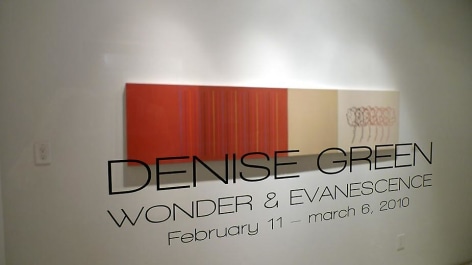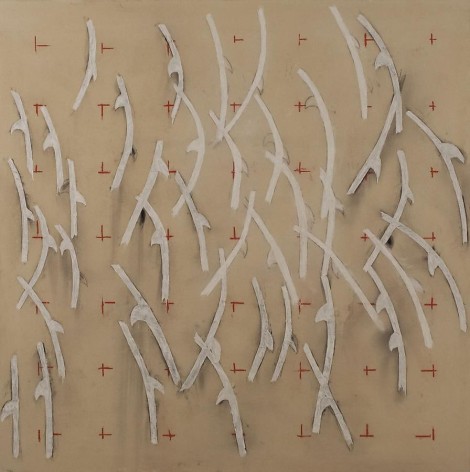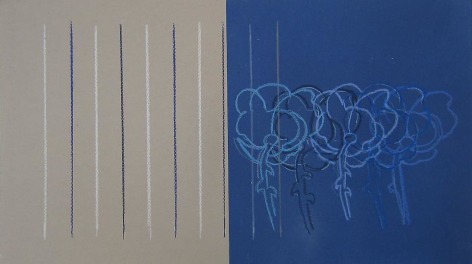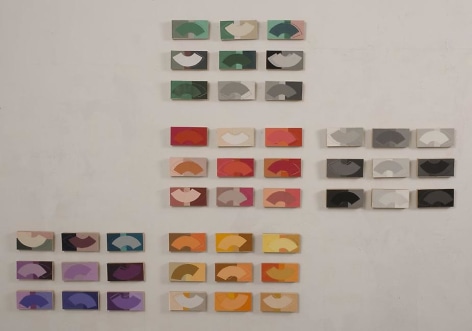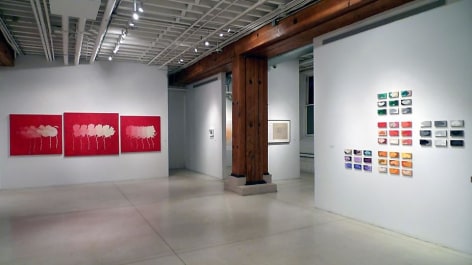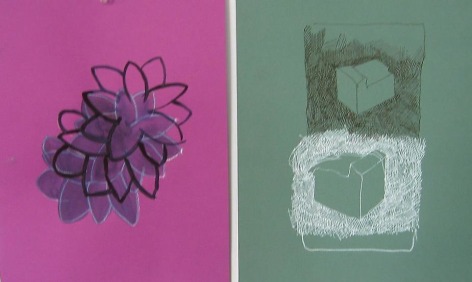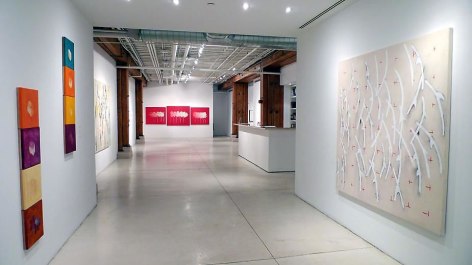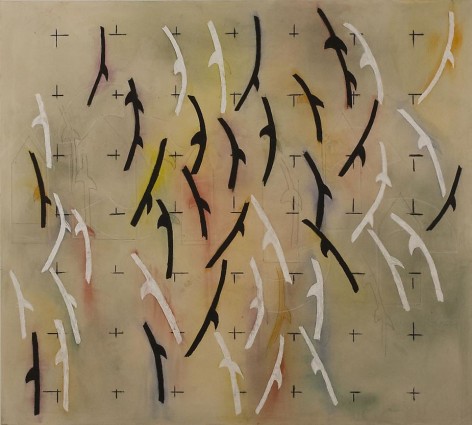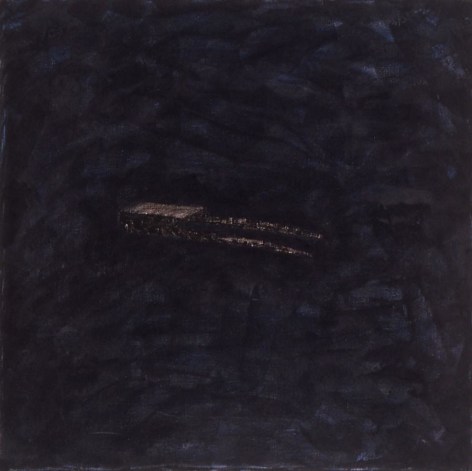
For her first solo exhibition at Sundaram Tagore Gallery New York, Australian-American artist Denise Green, who studied under Mark Rothko and Robert Motherwell, applies Indian and Aboriginal philosophy to modernist technique, composing deeply personal works. Disembodied objects such as cut roses, fan-like shapes and stone fragments hover in the center of her mixed-media paintings and works on paper. Yet, the objects are not to be read literally, nor do they bear specific meaning. Rather they are derived from a bank of personal and cultural imagery. The images are a direct extension of the artist's inner world and allude to her experiences with loss, grief and the transience of life.
The selection of works in this exhibition are informed by the linguistic term metonymy. Green explains: "Metonymic thinking implies for me the fusion of an inner spiritual and an outer material world. When an artist creates metonymically the artwork is seamless." In a metonymic framework, a sign or symbol does not have one single meaning, rather it has a more fluid, holistic meaning. There is a breakdown of dualities, such as spirit and matter, conscious and unconscious, or past and future. Instead, these oppositions become part of one seamless continuum. The notion of metonymy has been recognized in the West only in the last two decades. Green was one of the first Western artists to extend metonymic thought into the visual sphere. She encountered the idea in the writings of Indian poet and linguist A. K. Ramanujan and author and psychoanalyst Alan Roland after a stay in India in the 1980s. Moreover, Green has drawn links between metonymy and Aboriginal art practices. Although the Western eye might interpret an Aboriginal painting as an abstract composition, in Aboriginal culture it would be seen as a sacred pattern telling an ancestral story. In a map, for instance, the land formations are seen as a manifestation of the people's spirit and their impression on the land. Taking inspiration from the Aboriginal mode of thinking, Green paints tangible objects that map her inner world.
Rather than relying solely on a formalist approach to painting, Green enters the metonymic cognitive mode. Her rose triptychs, for instance, are metonymically connected to her state of mind. The body of work emerged in response to her mother's death. While grieving, Green found she was drawn to roses as they triggered her memory of her mother as a gardener and the transience of life. She began to repeat the image of a cut rose in her work intensifying the color with each permutation of the motif. Using layers of acrylic paint combined with pencil, chalk, wax, and marble dust, Green built nuanced environments in which she placed the syncopated forms. Elusively rendered, the cut flowers are flattened and reduced to their essence. The images are ethereal and evoke memories projected on the screen of the mind. As is the case with all of Green's works, a narrative is implied but one that is non-linear and abstract. Multivalent and challenging, Green's work gives new meaning to the notion of globalization in art.
Born in Australia, Green arrived in New York City in 1969. Studying under renowned painters Mark Rothko and Robert Motherwell at Hunter College, Green established roots in the Western modernist tradition. Her first major exhibition New Image Painting at the Whitney Museum in 1978 launched her into the New York art world. Denise Green has had more than 90 solo exhibitions and her work has been the subject nine museum retrospectives in the last decade including P.S. 1 Contemporary Art Center/MoMA in New York (1999), the Art Gallery of New South Wales (2001) and the Museum Kurhaus Kleve in Germany (2006). Her paintings are in the collections of the Museum of Modern Art, New York; The Solomon R Guggenheim Museum, New York; Corcoran Gallery of Art, Washington, D.C.; the Museum of Contemporary Art, Chicago; the Albertina Museum, Vienna, Austria; and the Museum of Contemporary Art, Sydney. In 2007 she was awarded the Order of Australia.
This exhibition is accompanied by a publication by the artist titled Metonymy in Contemporary Art: A New Paradigm.
For more information please email gallery@sundaramtagore.com or call 212-677-4520.

